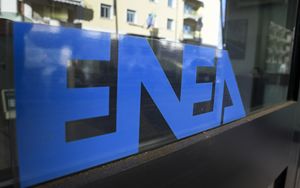(Finance) – As part of the project Reciprocal funded by the Ministry of Enterprise and Made in Italy, ENEA has developed a new analysis methodology to evaluate the impact of industries on local water resources, such as rivers and lakes. The tests – explains the note – were conducted in Italy on two paper mills and a textile industry and the results were published in the international journal Journal of Environmental Management. The two paper mills where the new methodology was tested are located in the Brenta-Baccaglione (Veneto) and Arno (Tuscany) sub-basins, while the textile company is located near the Ticino river (Lombardy).
The methodology elaborated by the ENEA research team provides for the calculation of three indicators capable of returning a ‘snapshot’ of the impact of industrial water uses on basins and sub-basins: the first is the Water Consumption Stress Index – WCSI, the second is the total impact index of the industrial settlement (Overall Factory Basin Index – OFBI) on the local catchment area, finally, the third is the company water reuse index (Internal Water Reuse – IWR).
“In general, these two productive sectors are characterized by a high water consumption but there is clearly a difference in the balance of water resources between the sub-basins considered: the Arno it is the one that presents the most critical issues for water exploitation, the quantity of water available and seasonal variability”, explains Luigi Petta, head of the ENEA Laboratory of Technologies for the efficient use and management of water and wastewater and co-author of the study together to researchers Gianpaolo Sabia, Davide Mattioli and Michela Langone.
Specifically, the analysis of three sub-basins highlighted a significant difference between Northern Italy characterized by low water stress and Central Italy which instead presents situations of medium-high water suffering, even if the most critical situation is recorded in Sicily and in most of Puglia and Basilicata.
As for the total impact of the industrial settlement, the OFBI index varies from a minimum of the Lombard textile company on the Ticino water balance (0.002%) to a maximum of the Tuscan paper mill on the Arno (0.192%), which however is the most virtuous in terms of water reuse (98%).
“Based on these case studies, the methodology we propose is therefore able to evaluate the effective impact of a specific production site on rivers, lakes and aquifers and thus provide local administrations, consumers and businesses with information useful for understanding and evaluating the impact on local water stress”, underlines Petta. “Population growth and climate change are among the main causes of unsustainable pressure on water reserves globally: lhe annual demand for water is around 4,600 billion m3 but by 2050 it could reach almost 6,000 billion m3 a year. It is therefore essential to identify reliable methodologies to evaluate the impact of activities, especially industrial ones, on local water resources, also to support the adoption of new production and consumption models that minimize water use”, concludes the expert of ENEA.
In Italy – explains the ENEA note – every year, industry consumes about 5.5 billion m3 of water (21% of total consumption), even if agriculture remains the most water-intensive sector with 14.5 billion m3 of water used (over 50%)[2]. This is a trend that partially reflects the European trend, where water consumption (214 billion m3 per year) is attributable to agricultural activities (58%), cooling (18%), industry (11 %), civil uses (10%) and services (3%).
